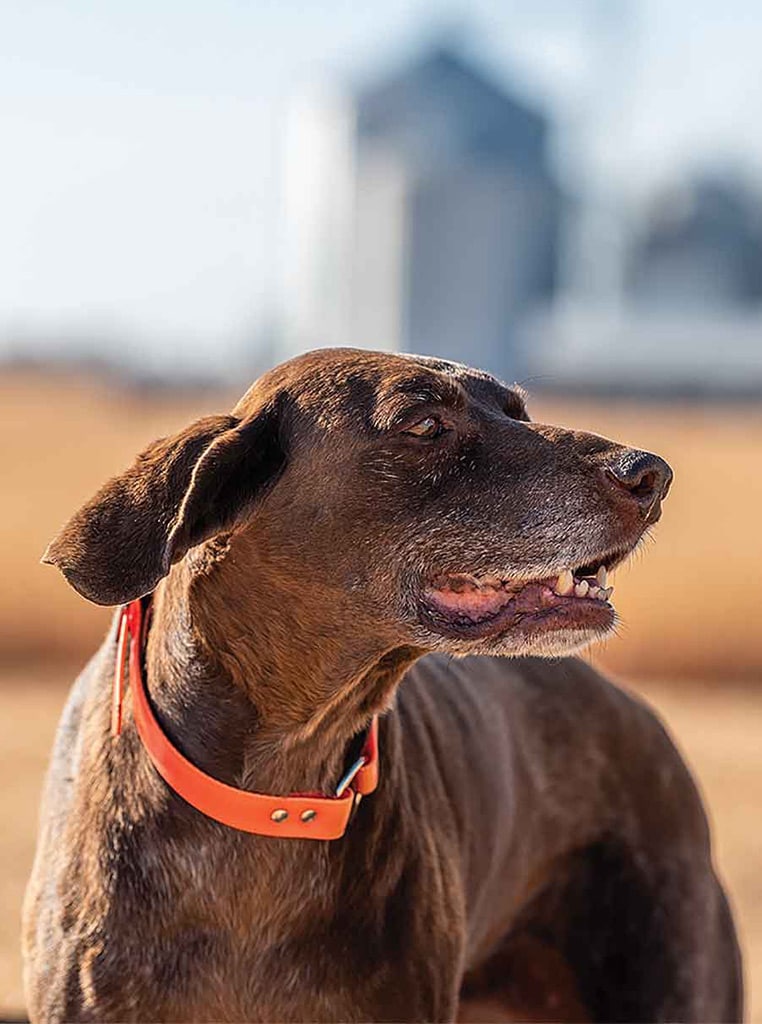Education March 01, 2023
.
.
The $50 billion question.
This brand or that? Wet or dry? Raw or freeze dried? Chicken, beef, or kangaroo? Grain-free?
Dog food choices are almost endless. How do you choose the right one?
An internet search and a scan through advertisements for the $50 billion industry will give you many different answers, most astutely designed to reach your emotions because pet food companies know most pet owners now think of their animals as family members more than ever before and want to feed them as such.
Associate professor and pet food program coordinator at Kansas State University, Greg Aldrich, Ph.D., believes this question does not have to be a 'Pandora's Box' scenario. Your choice in dog food will not unleash physical or emotional curses on your family and friends, furry or otherwise.
"I've worked with thousands of formulations and will objectively tell you there are a lot of really good products on the market today," he says. "The notion of vilifying one over the other because it includes ingredient A or B is absurd. The animal needs nutrients, and ingredients are merely the delivery system for those nutrients."
But because dogs are individuals, they tolerate specific ingredients differently. This is why so many options are available to provide the 40 key nutrients a dog needs, Aldrich says.
"I will be the first one to acknowledge there are certain ingredients an animal may have an adverse reaction to with an immune function or just have an aversion. If that happens, we need to find a different ingredient to deliver those nutrients."
For a food to be considered "complete and balanced" (i.e., contain the proper amount of all necessary nutrients for the animal's size and age), it must meet the standards set by the Association of American Feed Control Officials (AAFCO), the association charged with regulating animal feed sales. Foods are confirmed either through feeding trials or chemical analysis. Food meeting the criteria will have a "nutrient adequacy statement" on the package.

Above. Violet, a 45-pound, 2-year-old border collie poodle mix, eats a food formulated for medium sized, active dogs and that doesn't contain eggs because of a family member's allergy. Felixx, a 30-pound, 15-year-old schnauzer poodle mix, eats a chicken and sweet potato-based kibble after he reacted to others.
Where to start? Stacy Lewison, DVM, at Lakeside Companion Animal Clinic in Cottonwood, Minn., says, “Most normal, healthy dogs can eat a nice, moderately priced food. I'm a big proponent of the brands that perform feeding trials in addition to meeting AAFCO chemical analysis standards. I don't always recommend buying from big brands, but for pet food, there is no way a boutique food company can compete with the quality assurance processes of larger, well-established brands."
Similarly, Aldrich advises starting with something in the middle of the market you can easily purchase and meets your dog's needs.
“Find the diet you can afford and agrees with your pet," he says. “You'll know the acceptability of a food when they go to the bowl. They may spit it out if they don't like it, and then you can tell what you have to pick up as leftovers as stool."
According to research published in 2022 by University of Illinois animal scientists, you will be able to tell if a food agrees with your dog after a week. They concluded the microbes in a dog's gut will completely turn over and stabilize again in 6-10 days following a sudden diet shift.
If your dog does not digest the food well or otherwise reacts, Aldrich recommends making subtle changes.
“Switch to a different formula within the same franchise first. For example, if the first food had fish and sweet potatoes, try the chicken and rice version. If the same reaction happens, try a chicken and rice formula from a different brand," he says.
This process of elimination will highlight if the issue is due to a main ingredient, a smaller ingredient in the formula, or something else physiological.
Lewison warns pet owners to not overly humanize their pets by thinking a food aversion may be caused by a human dietary issue, such as celiac disease.
“I see clients impose things like gluten intolerance on their dog without any diagnostics. Celiac disease is not even a recognized condition for dogs. Unnecessarily removing an ingredient from a pet's diet can effect the nutrients they receive and cause other issues such as dilated cardiomyopathy. This has occurred in many dogs who were fed a grain-free diet that also lacked proper taurine."
Instead, Lewison recommends trying food designed for the specific ailment.
“We can treat a lot of medical conditions using nutrition as therapy instead of drugs because there are so many science-based, prescription and over-the-counter diets for things like GI tract issues, urinary tract issues, and renal disease," she says.
This unfortunately happened to Tullie, a golden doodle from Boise, Idaho. She began having skin irritations and ear infections. Her owners switched from one food to another, eventually to a grain-free food with kangaroo meat. A few years later her new veterinarian discovered she had developed dilated cardiomyopathy and immediately added a taurine supplement and prescribed a different food. She is now a relatively healthy and happy 12 year old.
Still have questions? Your veterinarian should be able to help. If not, or to get a second opinion, you can consult with a veterinary nutritionist directly to address specific health issues or to simply optimize the animal's health. Many work with the state universities, such as the University of Minnesota Veterinary Medical Center Clinical Nutrition Service.
Several veterinary and pet food associations also have information online to help you, such as the World Small Animal Veterinary Association's global nutrition toolkit. ‡
Above. Tullie enjoys fresh, Idaho snow. Obesity is a leading health issue for pets. To maintain a healthy weight, pick a food designed for your pet's life stage and activity level. Millie, a 9-year-old, German shorthaired pointer, needs a food to maintain her weight now compared to one that helped her grow when she was a puppy.
Read More

SPECIALTY/NICHE
Glass Blown Art
Ottawa Valley artist finds his passion in an age-old art form.

FARM OPERATION, AGRICULTURE
Keeping It Fresh
Couple only adds new ventures that will fit in with their core values.




